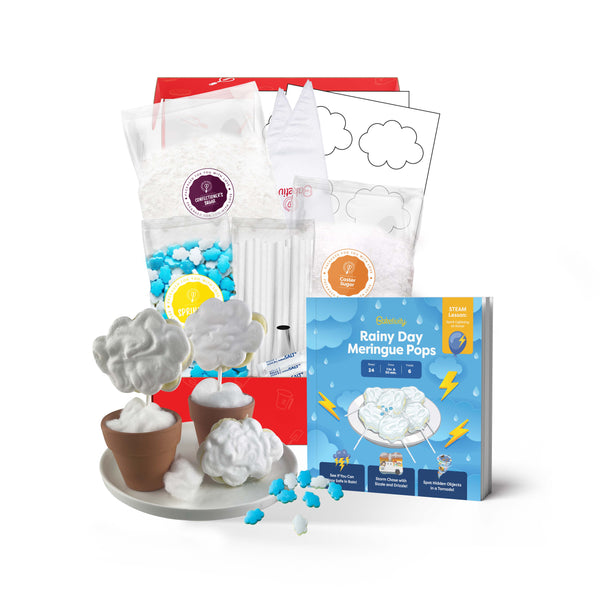Are you spending more time in the kitchen than with your family? We've all been there - whipping up one meal for the adults and another for the picky eaters. It's like running a 24/7 diner, isn't it? But what if we told you there's a way to simplify mealtime without compromising on nutrition or taste?
Let's face it, cooking separate meals for kids can be exhausting. Remember that time you accidentally served your toddler your spicy curry instead of their mac and cheese? Oops! We've got some clever tricks up our sleeves to help you create meals the whole family will love. Ready to reclaim your sanity and bring everyone back to the same table?Key Takeaways
- Cooking separate meals for kids can be time-consuming and exhausting for parents
- Involve children in meal planning and introduce new foods gradually to expand their palates
- Create versatile family-friendly meals using deconstructed dishes and build-your-own dinner nights
- Adapt flavors and textures of one meal to suit everyone's preferences and offer healthy side options
- Use batch cooking, freezing, and time-saving appliances like slow cookers to reduce cooking time
The Challenge of Cooking Separate Meals for Kids
Preparing different dishes for adults and children can turn mealtimes into a juggling act. Let's explore why this happens and how it affects families.Common Reasons Parents Cook Multiple Meals
Parents often find themselves in the kitchen longer than necessary due to:- Picky eaters: Some kids refuse to try new foods or have limited preferences.
- Different nutritional needs: Growing children may require specific nutrients that adults don't.
- Taste preferences: Adults might enjoy spicier or more complex flavors than kids.
- Food allergies or intolerances: Family members with dietary restrictions need separate dishes.
- Schedule conflicts: Varying meal times for family members can lead to multiple cooking sessions.
The Toll on Time and Energy
Cooking separate meals takes a bite out of our day and energy reserves. It's like running a short-order kitchen at home – exhausting! Ever tried to cook three different meals simultaneously? It's a recipe for disaster! Picture this: spaghetti boiling over, chicken burning in the oven, and veggies wilting in the steamer. Oops! We've all been there, right? The constant planning, prepping, and cooking can leave us feeling drained. It's not just about the time spent in the kitchen; it's the mental load of managing everyone's preferences and needs. How many hours do you spend each week cooking multiple meals? It adds up fast! And let's not forget the mountain of dishes that follows.Strategies to Simplify Mealtime
 We've got some clever tricks up our sleeves to make mealtime easier for everyone. These strategies will help you save time and energy while keeping the whole family happy and well-fed.
We've got some clever tricks up our sleeves to make mealtime easier for everyone. These strategies will help you save time and energy while keeping the whole family happy and well-fed.
Involving Kids in Meal Planning
Getting kids involved in meal planning is a game-changer. It's like turning them into mini chefs! Let them pick recipes from cookbooks or online sources. Create a weekly menu together and hang it on the fridge. This gives kids a sense of control and makes them more likely to eat what's served. Plus, it's a great opportunity to teach them about nutrition and budgeting. Pro tip: Make a colorful chart with meal ideas and let kids use stickers to vote for their favorites. It's a fun way to get them excited about family dinners!Introducing New Foods Gradually
Introducing new foods can be like a game of hide-and-seek. Start by mixing small amounts of new ingredients into familiar dishes. For example, add finely chopped spinach to spaghetti sauce or blend cauliflower into mashed potatoes. Gradually increase the amount over time. Try the "one bite" rule: everyone takes one bite of a new food without pressure to finish it. It's amazing how many times kids (and adults!) discover they actually like something after giving it a fair shot.Creating Versatile Family-Friendly Meals
 Cooking one meal that pleases everyone can be a game-changer for busy families. Let's explore some strategies to create versatile dishes that cater to different tastes and dietary needs.
Cooking one meal that pleases everyone can be a game-changer for busy families. Let's explore some strategies to create versatile dishes that cater to different tastes and dietary needs.
Deconstructed Dishes
Deconstructed dishes offer a flexible approach to family meals. We separate ingredients, allowing each family member to customize their plate. For example, a taco bar with various toppings lets kids and adults build their perfect meal. This method works well for salads, pasta dishes, and stir-fries too. It's a win-win: picky eaters feel in control, while parents save time and energy.Build-Your-Own Dinner Nights
Build-your-own dinner nights are a hit with families. They're fun, interactive, and cater to everyone's preferences. Picture this: a pizza-making station with various toppings spread out like a colorful buffet. Kids love the hands-on experience, and parents enjoy watching their little ones get creative. It's like hosting a mini cooking show in your kitchen! Remember the time little Timmy tried to make a broccoli and gummy bear pizza? While it wasn't a culinary masterpiece, it sure gave us a good laugh! These nights aren't just about food; they're about creating memories and fostering independence. What's your family's favorite build-your-own meal? Have you ever had any funny food combinations come out of these nights?Making One Meal Work for Everyone
Creating a single meal that satisfies everyone's tastes and nutritional needs is possible with a few smart strategies. Let's explore how to adapt flavors and textures and offer healthy side options to make mealtime enjoyable for the whole family.Adapting Flavors and Textures
We've all been there – one child wants spicy, another prefers mild, and you're craving something in between. The secret? Start with a neutral base and customize from there. For example, prepare a basic chicken and vegetable stir-fry. Set aside plain portions for sensitive palates, then add spices or sauces to the rest. This way, everyone gets what they like without extra cooking. Texture matters too. Some kids love crunchy foods, while others prefer soft. Try serving vegetables both raw and cooked. Offer crispy toppings like nuts or seeds on the side. Remember the "one bite" rule? It works wonders here. Encourage family members to try different textures – they might surprise themselves!Offering Healthy Side Options
Side dishes are your secret weapon in the battle against picky eating. Think of your dinner plate as a mini buffet. Serve a main dish alongside 2-3 healthy sides. This approach gives everyone choices without creating extra work for you. Here's a fun idea: create a "veggie train" with small containers of different cut-up vegetables. Kids love the presentation, and it makes trying new foods more exciting. Don't forget about fruit – it's nature's dessert and a great way to end the meal on a sweet note. Remember, variety is key. Rotate your side options to keep things interesting. One night, offer roasted sweet potatoes and steamed broccoli. The next, try a colorful salad and whole grain rolls. By providing options, you're more likely to hit everyone's preferences while still serving a single meal.Teaching Kids to Appreciate Different Foods
Teaching kids to appreciate diverse foods is crucial for their health and future eating habits. It's a journey that requires patience, creativity, and a positive attitude.The Importance of Patience and Persistence
Introducing new foods to kids takes time and repetition. We've found that offering a food 10-15 times before a child accepts it is common. Don't give up after the first few tries! Keep presenting new foods in different ways. For example, serve carrots raw with dip, roasted with honey, or grated in a salad. This variety helps kids discover how they prefer certain foods. Remember, forcing kids to eat something often backfires. Instead, we encourage a "no pressure" approach. Let them explore foods at their own pace. A funny story comes to mind: One parent we know turned broccoli into "dinosaur trees," and suddenly, her son couldn't get enough of them!Modeling Healthy Eating Habits
Kids learn by watching us. When we enjoy a variety of foods, they're more likely to follow suit. Make a point of eating meals together as a family. Show enthusiasm for trying new dishes and talk about the flavors you enjoy. Here's a fun idea: Have a "try it" Tuesday where everyone in the family tastes a new food together. It could be an exotic fruit or a vegetable prepared in a new way. Ask open-ended questions like, "What does this remind you of?" or "How would you describe the texture?" This turns tasting into a fun, low-pressure game. Have you ever thought about growing a small herb garden with your kids? It's a great way to get them excited about new flavors. They'll love using "their" herbs in family meals. Remember, we're all in this together. Building healthy eating habits is a family affair. By staying patient, persistent, and modeling good behaviors, we're setting our kids up for a lifetime of adventurous eating.Meal Prep Tips to Reduce Cooking Time
Efficient meal prep is a game-changer for busy families. Let's explore some time-saving techniques that'll make your life easier and your kitchen adventures more enjoyable.Batch Cooking and Freezing
Batch cooking is like hitting the jackpot in the kitchen lottery. We cook larger portions of our favorite dishes and freeze them for later use. It's a simple equation: cook once, eat twice (or more)! Here are some tips to make batch cooking a breeze:- Choose freezer-friendly recipes: Soups, stews, casseroles, and meatballs are perfect candidates.
- Invest in quality storage containers: Airtight, freezer-safe containers are your new best friends.
- Label everything: Trust us, you don't want to play freezer roulette with mystery meals.
- Portion smartly: Freeze in family-sized or individual portions for flexibility.
Using Slow Cookers and Instant Pots
Slow cookers and Instant Pots are like kitchen superheroes, swooping in to save dinner time. These appliances work their magic while we're busy conquering the world (or at least our to-do lists). Here's how to make the most of these time-saving tools:- Prep ingredients the night before: Load up your slow cooker in the morning and come home to a ready-made meal.
- Try one-pot meals: Toss in protein, veggies, and grains for a complete dish with minimal cleanup.
- Use the delay start function: Time your meals to perfection, even if you're running late.
- Experiment with different recipes: From breakfast oatmeal to desserts, these appliances are versatile kitchen sidekicks.




